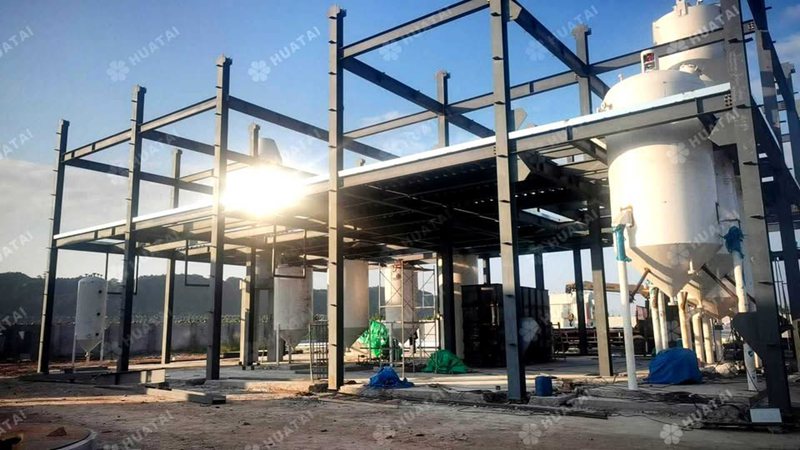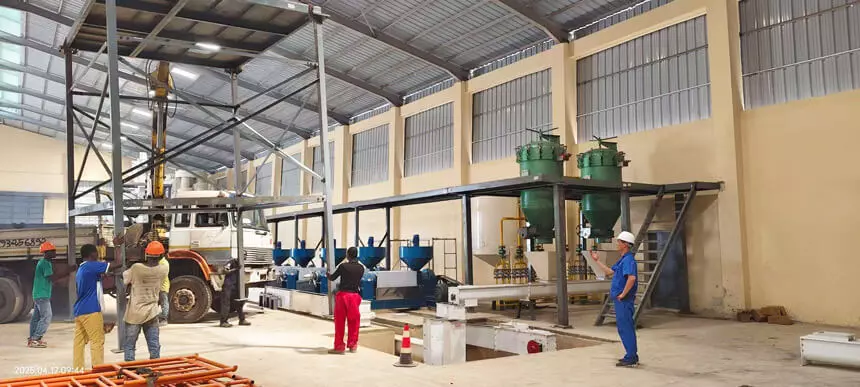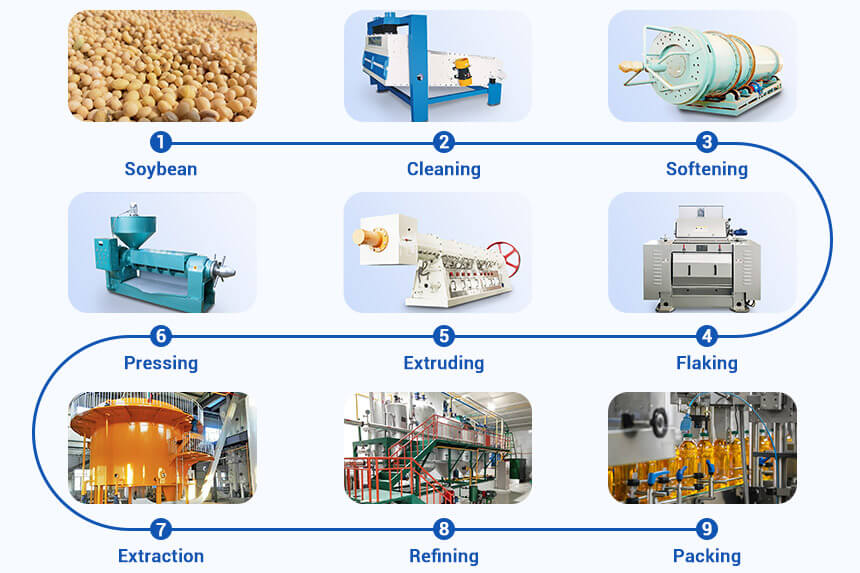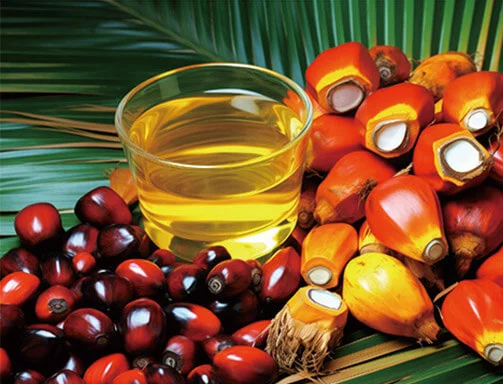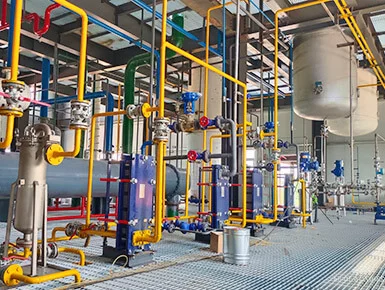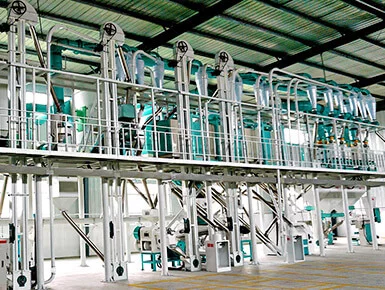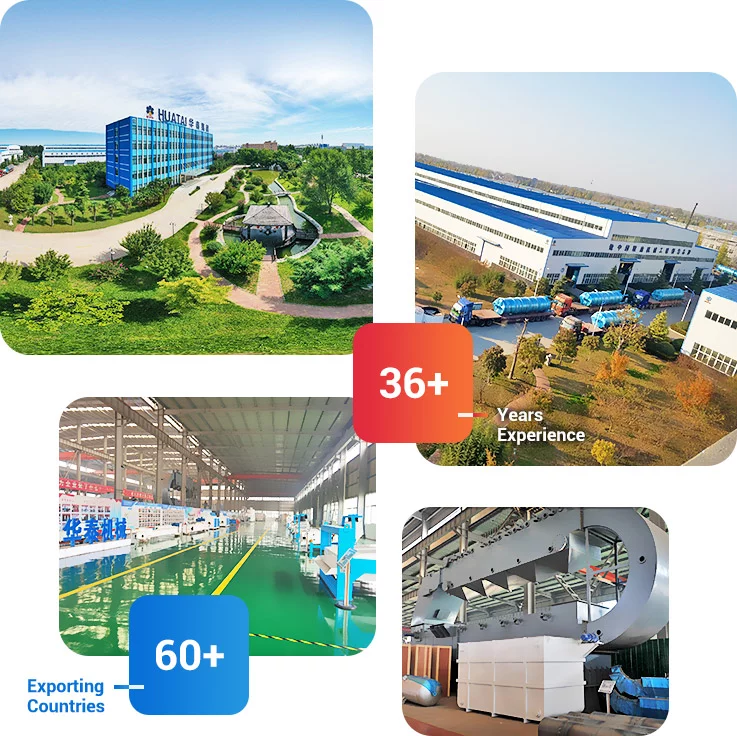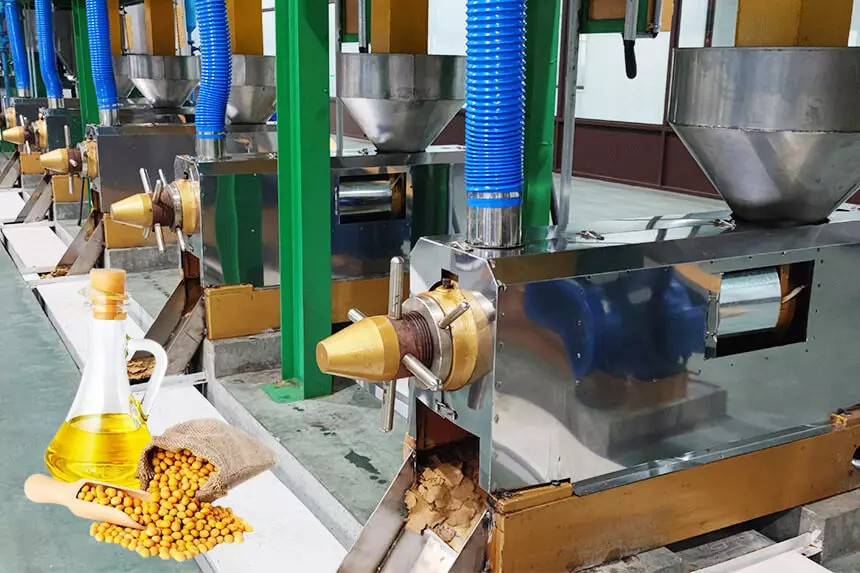
Introduction
The soybean oil extraction process begins with raw soybeans. Pretreatment removes impurities and adjusts the soybean structure, then through oil extraction to separate the crude oil. Refining processes improve oil quality, and solvent recovery systems finally achieve resource recycling and cost control.
Henan Huatai Intelligent Equipment Group specializes in soybean oil manufacturing plant construction, equipment installation and commissioning, and business plan design. Through technological innovation and extensive project experience (such as the 100TPD soybean oil processing plant project in Togo), Huatai provides clients with one-stop services.
For clients considering investing in soybean oil extraction equipment, understanding total process and the functions of each stage is important. In this article, I will provide a detailed analysis of the machines and equipment used in each stage of the soybean oil extraction process and their functions.
![Soybean pretreatment Soybean pretreatment]()
Soybean Pretreatment
Soybean pretreatment is the first step in oil extraction process, directly affecting oil yield and quality. This stage primarily involves cleaning and removing impurities, crushing and peeling, softening and conditioning, and flaking. Each step requires specialized equipment.
Cleaning and Screening
Raw soybeans first pass through a cleaning screen and stone remover to remove dust, stems, leaves, stones, and metal impurities. These impurities not only affect oil quality but can also damage subsequent equipment.
Efficient cleaning equipment typically uses multi-layer vibrating screens and magnetic separators to ensure raw material purity, reduce equipment wear, and improve production safety.
Crushing and Peeling
After cleaning, soybeans enter the crusher, crushed into 4-6 pieces. Then, through a hull-kernel separation system to remove the hulls.
Crushing increases surface area for subsequent heating and oil extraction. Peeling reduces oil loss caused by oil absorption by the hulls, while also improving the protein content of soybean meal (the hulls are high in cellulose and low in nutritional value).
Modern crushers use a tooth roller design to achieve efficient crushing while controlling powder fineness.
Softening and Conditioning
After crushing, place soybean particles in a softening pot for conditioning treatment. Through adjusting heating and moisture, soybeans achieve an optimal level of elasticity and hardness. Softening conditions are typically controlled at 60–70°C, 10-12% moisture, and 30-40 minutes.
This step gives soybean embryos suitable plasticity, beneficial to subsequent flaking operations, and promotes oil release.
Flaking and Shaping
Conditioned soybean particles are pressed into thin flakes about 0.3 mm thick using a flaking machine. This step increases surface area, destroys cell structure, and makes oil extraction easier.
Flaking quality directly impacts extraction efficiency. Too thick results in low oil yield, while too thin may cause steam penetration difficulties and increase powder content.
High-quality flaking machines use finely ground roller surfaces and exact gap control systems to ensure uniform flake thickness.
Good pretreatment can improve soybean oil yield by 3-5%, while reducing energy consumption and wear on subsequent equipment. Huatai Group's pretreatment equipment utilizes a modular design and automated control system, can adjust process parameters based on raw material quality to ensure optimal pretreatment results and lay a solid foundation for subsequent oil extraction.
Soybean Oil Extraction
Soybean oil extraction is a core process in soybean oil production. There are two main methods: mechanical pressing and solvent extraction. The choice depends on production scale, investment budget, and product use. Large-scale commercial production typically uses solvent extraction or a combination of pressing followed by extraction to maximize oil yield.
Mechanical Pressing Method
The mechanical pressing method suits small to medium-scale production and users who focus on natural quality. This method uses physical pressure to squeeze oil from pre-treated soybean flakes no using chemical solvents, keeping the oil's natural properties.
![Soybean oil screw press machine Soybean oil screw press machine]()
Screw Press Machine
This is the most commonly used mechanical pressing equipment, consisting of a pressing chamber, screw shaft, pressing cage, and cake adjustment device. The working principle involves rotating the screw shaft to push soybean flakes forward. Within the gradually reducing pressing chamber, the material is subjected to extreme pressure (up to 70 MPa). Oil flows out through gaps in the pressing cage, and cake residue is discharged through the outlet.
Screw oil presses have two types: single-screw and double-screw. The double screw oil press has higher oil yields and lower energy consumption.
Huatai Group's screw presses utilize variable frequency speed regulation and automatic temperature control systems, enabling optimization of pressing parameters based on raw material characteristics to ensure high oil yields while reducing energy consumption.
![Soybean oil hydraulic press machine Soybean oil hydraulic press machine]()
Hydraulic Oil Press Machine
The hydraulic oil press machine suits special oil products or small-scale production. Its working principle involves using a hydraulic system to generate high pressure, pressing the raw material in the pressing chamber to extract oil. Although the processing capacity is small, the oil quality is excellent, with a light color and minimal impurities.
Hydraulic oil presses typically operate at a pressure of 20-40 MPa and use intermittent operation. A single cycle includes loading, pressing, and cake unloading.
![Soybean oil solvent extraction Soybean oil solvent extraction]()
Solvent Extraction Method
The solvent extraction method is used in modern large-scale soybean oil mill plants. It offers high oil yield (residual oil content can reduce to 0.5%), large processing capacity, and suit continuous production. This method uses excellent solubility of organic solvents (typically hexane) in oils to dissolve fats from soybean flakes, then separates solvent from oil by distillation.
The extractor is the core equipment of the extraction system, available in various types such as rotocel, loop-type, and drag-chain. The working principle involves counter-current contact between soybean flakes and solvent within the extractor, with oils gradually dissolving from soybean flakes into the solvent to form a mixed oil (a mixture of oil and solvent). (Related Product: Rotocel extractor >>)
Fresh solvent enters from one end, and low-concentration mixed oil exits from the other. The soybean flakes move in opposite directions, entering with a high oil content and exiting with a very low oil content.
The following table compares two methods:
| Characteristics |
Mechanical Pressing Method |
Solvent Extraction Method |
| Oil Yield |
85-90% (residual oil rate: 5-7%) |
>99% (residual oil rate: <1%) |
| Processing Scale |
small to medium-scale plant (5-200 tons/day) |
large-scale plant (100-5000 tons/day) |
| Investment Cost |
Relatively low |
Higher |
| Oil Feature |
Rich flavor, retaining natural ingredients |
Lighter flavor, requiring subsequent refining |
| Safety |
Highly safe, no chemical solvent risks |
Requires strict explosion prevention measures |
Mixed Oil Processing and Wet Meal Desolventization
After solvent extraction, produce mixed oil (a mixture of soybean oil and solvent) and wet meal (cake meal containing 25–30% solvent). Both require processing to recover the solvent and improve the soybean oil purity.
Mixed Oil Processing
Mixed oil processing involves two steps: evaporation and stripping. First, an evaporator uses indirect steam heating to vaporize and separate most of the solvent from the mixed oil, increasing its concentration from 70% to 90-95%.
Then, a stripping tower uses direct steam, reducing residual solvent to below 50 ppm under high-temperature and high-vacuum conditions. Modern mixed oil processing systems utilize multi-effect evaporation and heat recovery technology, significantly reducing steam consumption.
Wet Meal Desolventization
Wet meal contains a large amount of solvent and requires a desolventizer. This equipment uses indirect steam heating and direct steam stripping to distill the solvent from the meal for recovery and reuse.
The desolventization process also inactivates urease activity, causing moderate denaturation of proteins and improving nutritional value. The moisture content of desolventized soybean meal is about 16%, and it must dry and cool to meet storage (moisture content of 12–13%, temperature not exceeding 40°C).
![Soybean oil refining plant Soybean oil refining plant]()
Crude Soybean Oil Refining
Crude soybean oil extracted from soybeans contains many impurities, including free fatty acids, phospholipids, pigments, gums, waxes, residual solvents, and trace metals. These impurities affect soybean oil color, flavor, stability, and nutritional value and must be removed through refining.
The refining process mainly includes degumming, deacidification, decolorization, and deodorization, each requiring specialized equipment.
![Soybean oil degumming machine Soybean oil degumming machine]()
Soybean Oil Degumming
Degumming removes phospholipids and gums from crude soybean oil. If not remove, they will cause foaming, precipitation, and darkening during subsequent heating, affecting oil quality and stability. Degumming methods include water degumming and acid refining.
Water degumming
Water degumming suits soybean oil with a high phospholipid content. Through adding hot water or steam to hydrate and swell phospholipids, agglomerate into pectin particles and are removed by centrifugal separation.
Water degumming equipment consists of refining tank and centrifuge, operating at a temperature typically between 70-80°C.
Acid degumming
Acid degumming employs phosphoric acid or citric acid to treat oils with lower phospholipid content or difficult-to-hydrate gums. The acid breaks down non-hydratable phospholipids, converting them into separable forms.
Acid degumming requires neutralization after degumming, so it is often integrated with the deacidification process.
![Soybean oil deacidification machine Soybean oil deacidification machine]()
Soybean Oil Deacidification
Deacidification mainly removes free fatty acids from soybean oil, which affect the oil's smoke point and flavor while reducing stability. The main deacidification methods are chemical alkali refining and physical refining.
Chemical alkali refining
Chemical alkali refining is a traditional and commonly used method. It involves adding sodium hydroxide solution to react with free fatty acids, forming soap, which is then separated by centrifugation.
Alkali refining equipment includes alkali preparation unit, mixer, and disc centrifuge. This process also removes some pigments, gums, and trace metals. However, it also produces wastewater and oil loss.
Physical refining
Physical refining, also known as steam distillation, involves injecting water steam under high temperature and high vacuum conditions to remove free fatty acids. This method suits oils with high acid values, requires no chemical additives, reduces environmental pollution, and improves oil yields.
However, it needs rigorous degumming and decolorization pretreatment to ensure complete removal of phospholipids and pigment from the oil.
![Soybean oil decolorization machine Soybean oil decolorization machine]()
Soybean Oil Decolorization
Decolorization removes pigments (such as carotene, chlorophyll, etc.) from oil, improving its color. It also removes residual saponins, phospholipids, and trace metals. The primary method uses white clay adsorption, core equipment is decolorization tower.
The decolorization tower is a vacuum container with agitation, typically operating at 100-110°C and maintaining a vacuum pressure below 50 mmHg. In the tower, soybean oil and a suitable amount of clay (0.5-2%) are mixed for 15-30 minutes. After the pigments are absorbed by white clay, the mixture is separated from oil through a filter (plate-and-frame filter or leaf filter).
![Soybean oil deodorization machine Soybean oil deodorization machine]()
Soybean Oil Deodorization
Deodorization is the final critical step in soybean oil refining. Its purpose is to remove volatile substances (such as aldehydes, ketones, hydrocarbons, etc.) that cause off-flavors and odors in soybean oil. It further removes free fatty acids and peroxides, thereby improving oil smoke point and stability.
Deodorization involves direct steam stripping under high temperature (220-250°C) and high vacuum (2-3 mmHg absolute pressure) to remove volatile compounds.
The deodorization system includes a deodorization tower, vacuum system, heat exchange system, and fatty acid recovery system. Modern deodorization towers typically use continuous-flow designs, internally divided into gas separation chambers, heating chambers, insulation chambers, and cooling chambers.
Soybean oil undergoes heating, stripping, and cooling in a tower, with a residence time of about 40-60 minutes. The deodorized oil needs add antioxidants (such as vitamin E) to maintain stability before entering the cooling stage to prevent discoloration.
For small-scale soybean oil processing plants or specialty oil production, Henan Huatai Group offers compact refining equipment such as the HTLYG series refining machines. These units feature an integrated design, reducing floor space and equipment investment.
For example, the HTLYG22 refining machine features an all-stainless steel construction and automated control system, enabling precise control temperature, stirring speed, and process time.
This equipment is very suitable for small and medium-sized production operations, meeting refining requirements of various vegetable oils, including soybean oil, peanut oil, and rapeseed oil.
![Soy oil extraction machine price Soy oil extraction machine price]()
Soybean Oil Extraction Machine Price
The price of soybean oil extraction equipment is affected by factors such as processing capacity, automation level, material quality, and technical level. Understanding the price structure and investment payback period is crucial for investors to make the right decisions.
- Small-scale: For example, the HTLYG series refining machine compact structure and minimal footprint, price is between $13,900 and $69,400.
- Medium-scale: Complete soybean oil extraction plant with a capacity of 30-100 tons/day costs about $694,400-$2,777,800, including full systems pretreatment, pressing/extraction, and refining.
- Large-scale: Complete soybean oil production lines with a capacity of 100-3000 tons/day, including pretreatment, extraction, refining, packaging, and automated control systems. For example, Huatai Group awarded the oil processing equipment procurement contract for Qihe County's oilseed deep processing project, price achieved $10,625,000.
![Soybean oil processing plant cost Soybean oil processing plant cost]()
Soybean Oil Processing Plant Investment Return Analysis
Investing in soybean oil extraction equipment has good economic benefits, typically recouping investment within 1-2 years. Taking a medium-scale oil mill plant (50 tons/day) as an example: (Related Video: 100 Ton Soybean Oil Extraction Plant in Togo Video >>)
- Equipment Investment: About $1.3889 million - $2.0833 million (including pretreatment, extraction, refining, and supporting equipment).
- Raw Material Cost: Based on soybean price of $555.56/ton, the daily raw material cost is about $27,800.
- Output Value: Based on an 18% oil yield, daily output oil is 9 tons and soybean meal is 41 tons. At a soybean oil price of $1,388.89/ton, the daily output value is $12,500. At a soybean meal price of $486.11/ton, the daily output value is $19,900 (USD). The total daily output value is $32,400.
- Operating Costs: Including labor, energy, solvent consumption, packaging, and management expenses, accounting for about 15-20% of total output value.
- Return on Investment: Daily gross profit ranges from $4,166.67 to $5,555.56, with annual profits reaching $1.3889 million to $2.0833 million. The payback period is about 1-2 years.
Conclusion
Choosing soybean oil extraction machine is a comprehensive decision-making process. When selecting, consider factors such as your production scale, investment budget, technical requirements, and product positioning to find the most suitable solution.
With professional technical expertise and extensive project experience, Henan Huatai Intelligent Equipment Group provides comprehensive support for your soybean oil production business, creating substantial economic benefits!
![]() Service Coverage
Service Coverage
![]() FAQ
FAQ


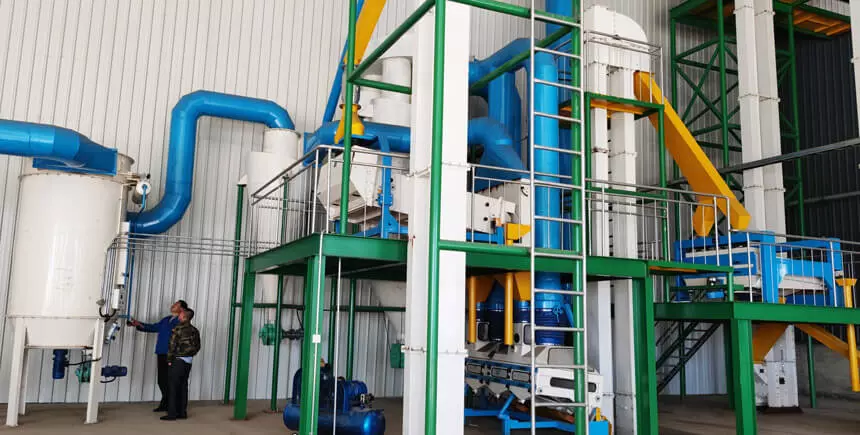
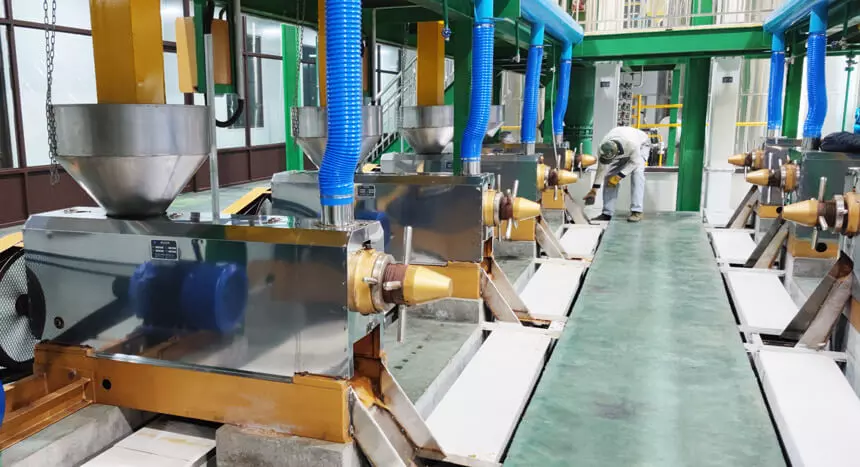

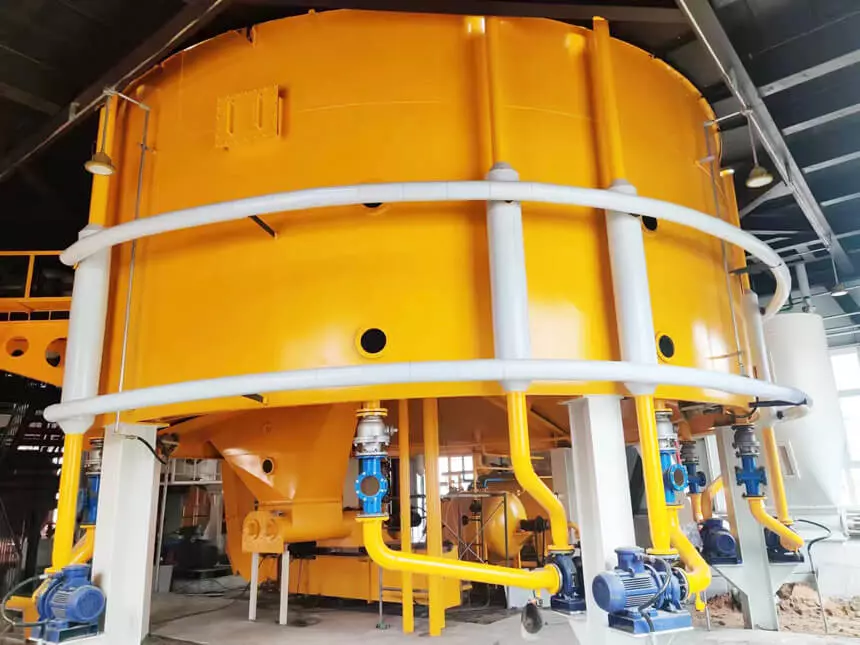
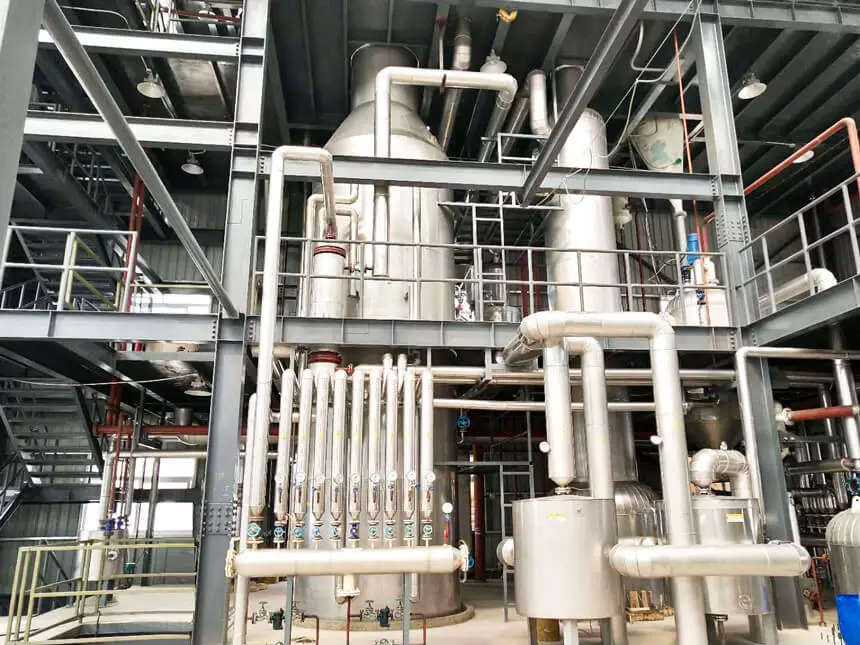
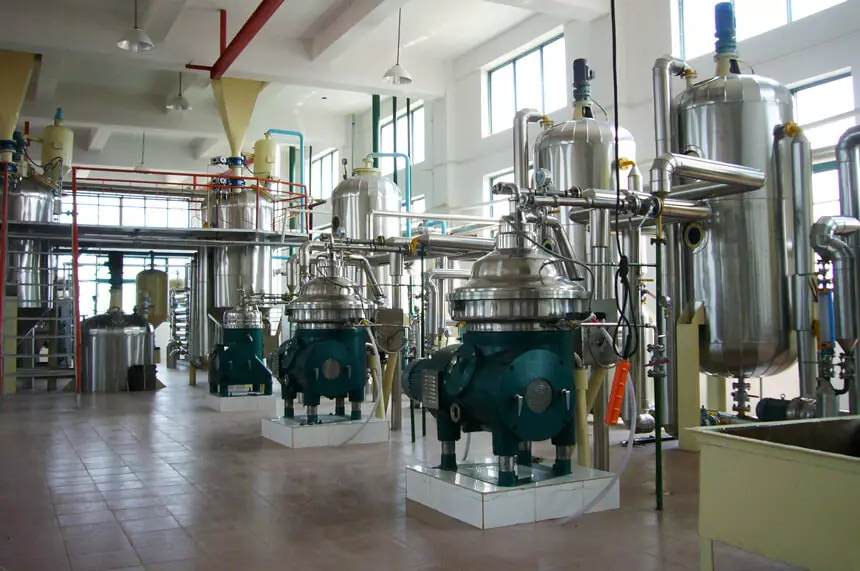
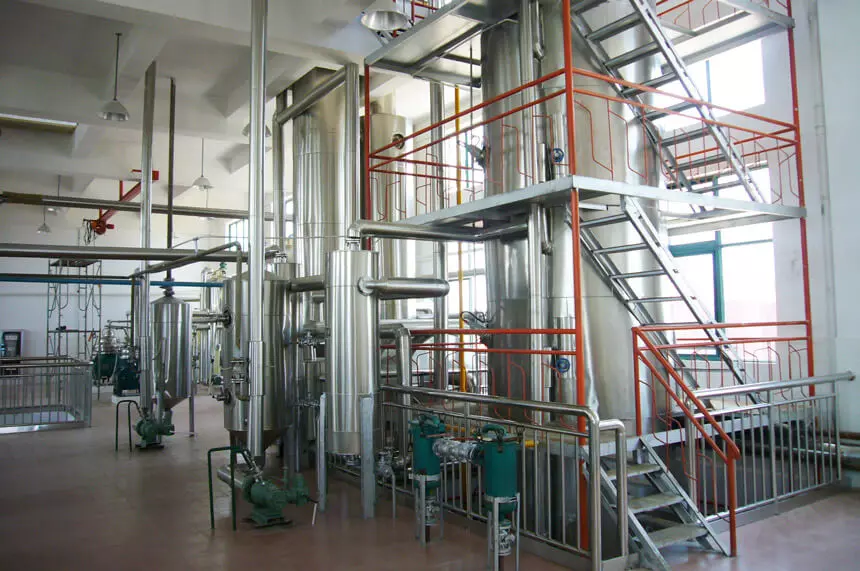
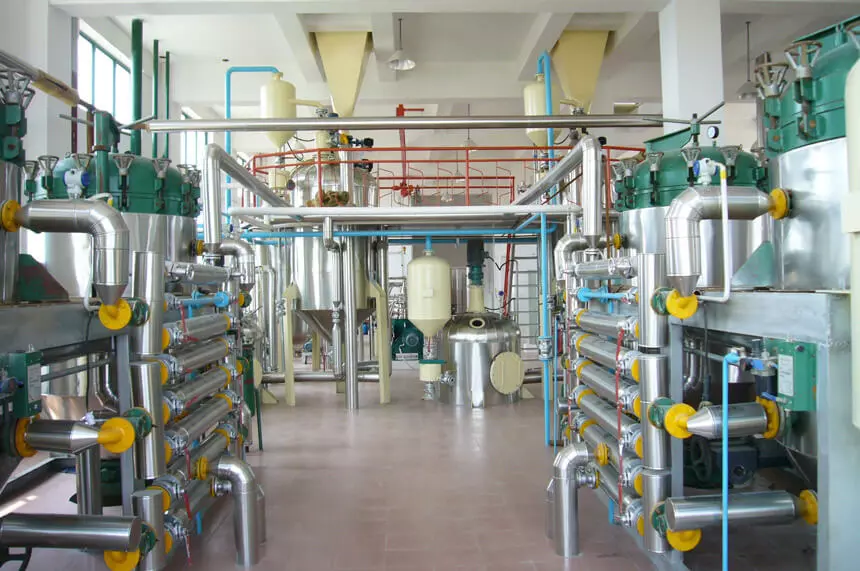
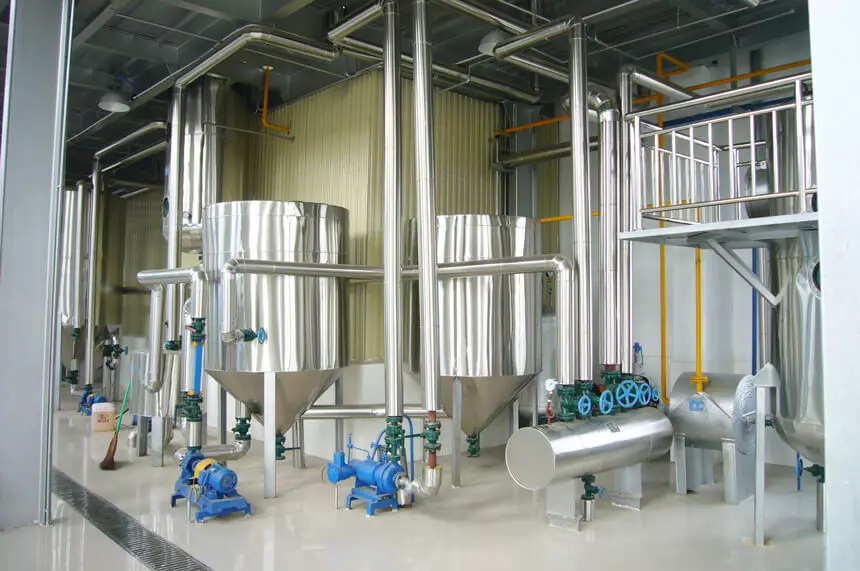
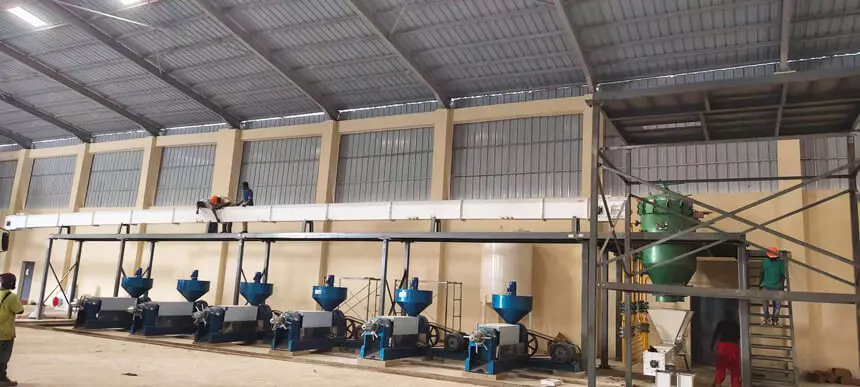
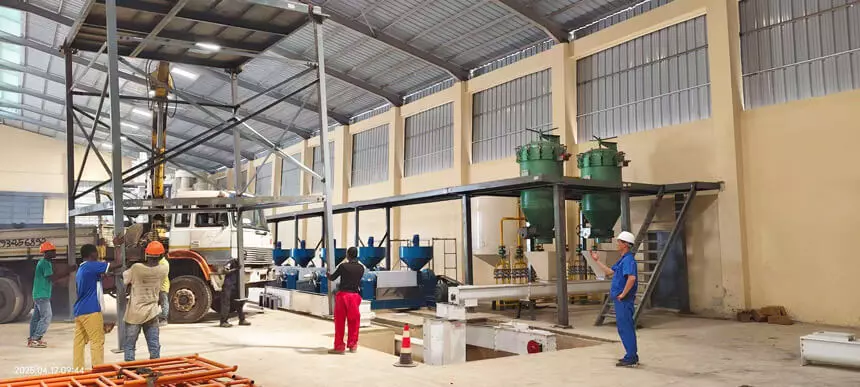
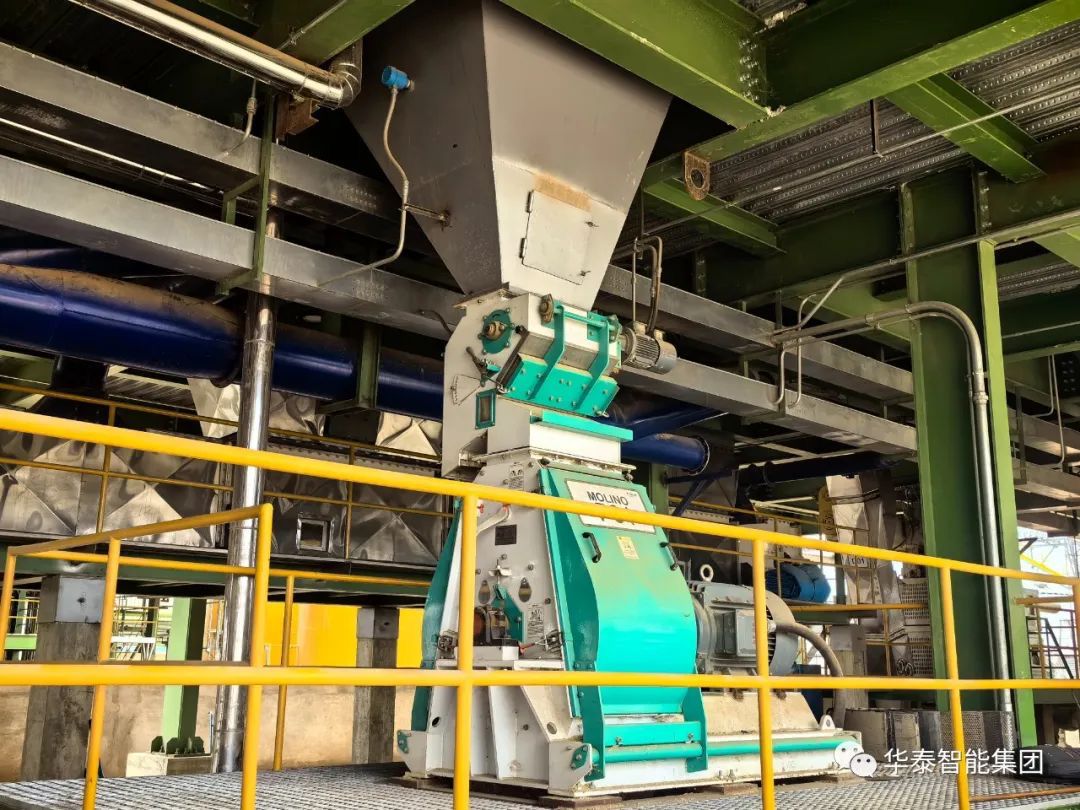
膨化机介绍-封面_副本.jpg)

